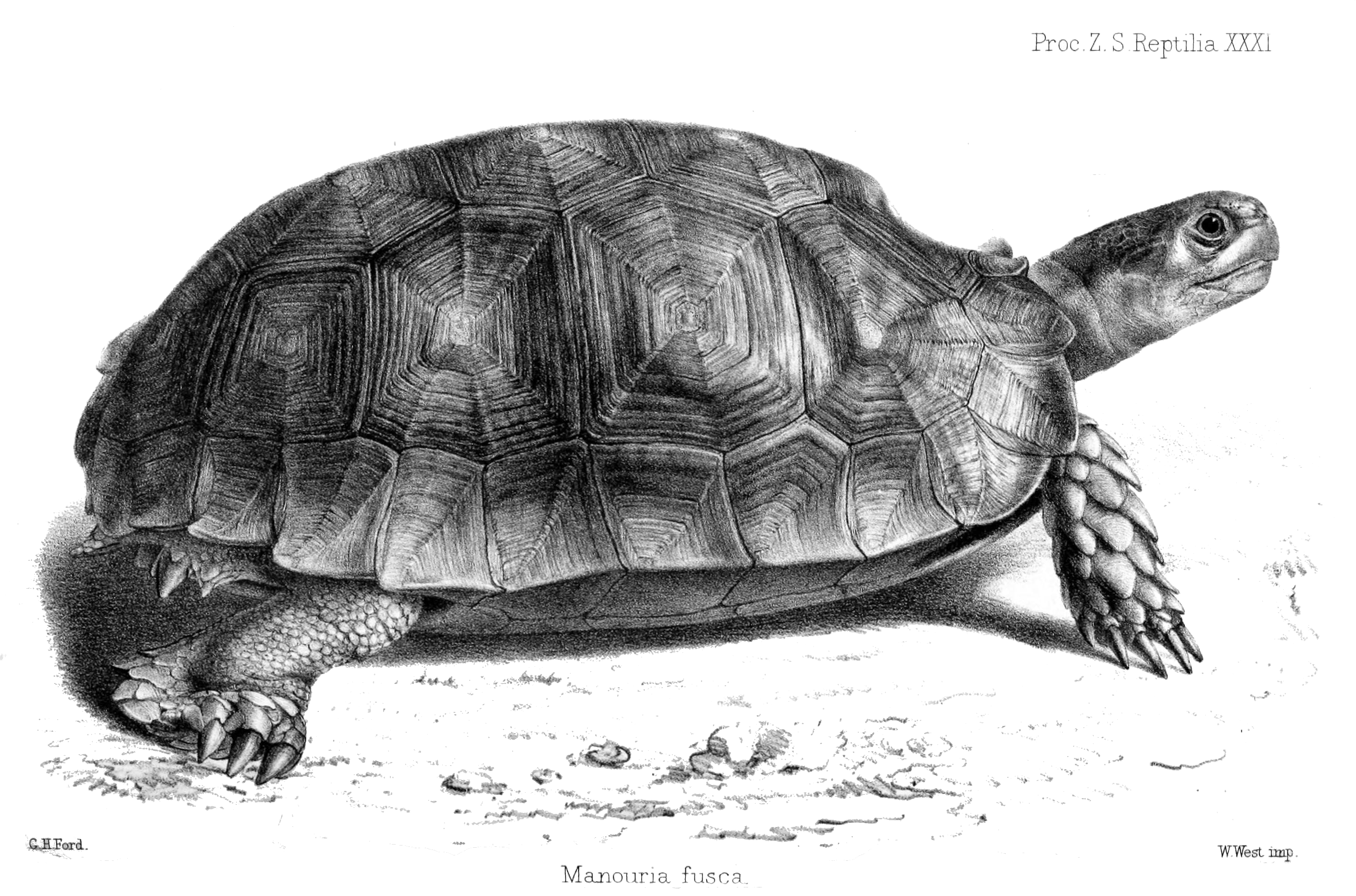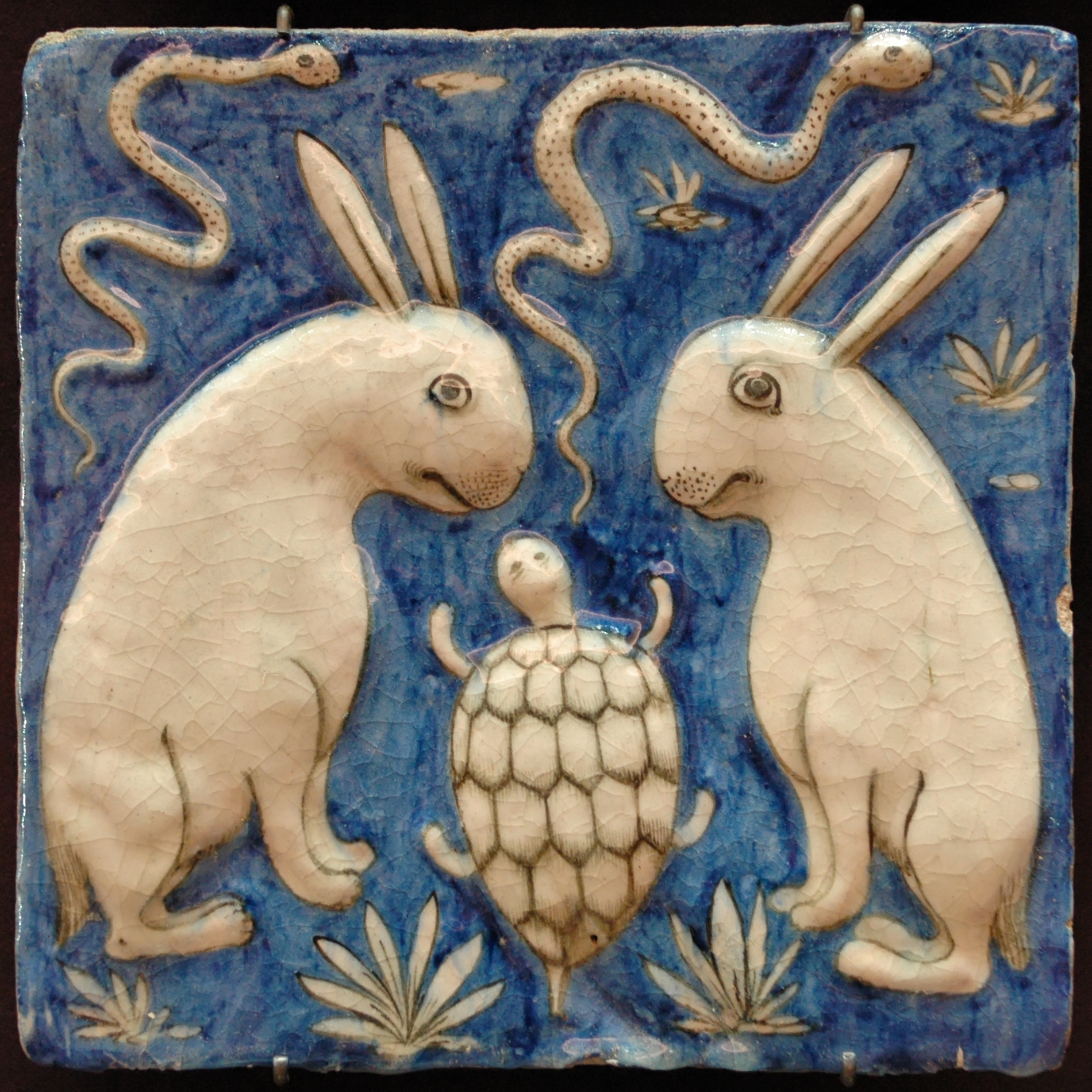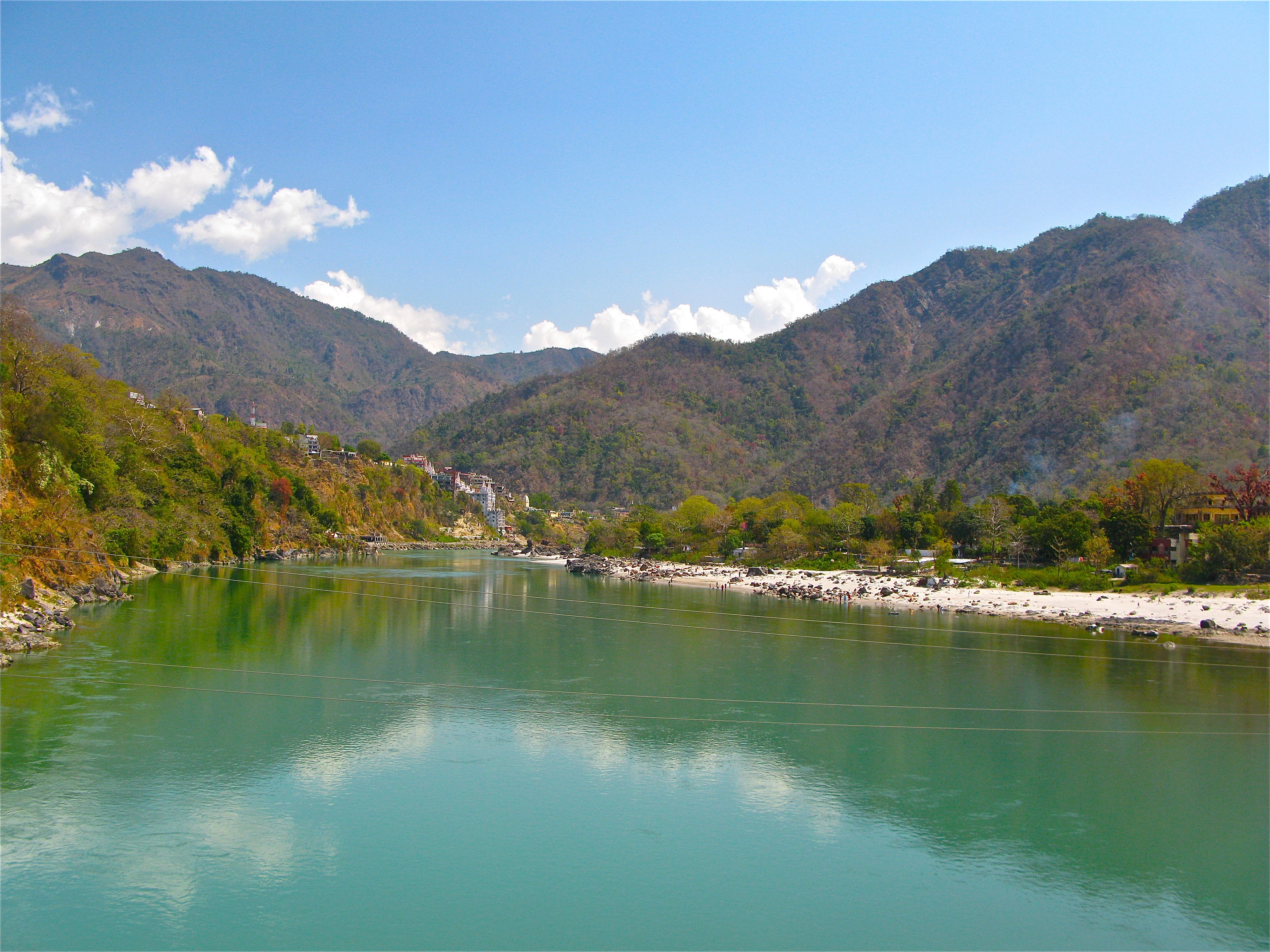|
Manouria
''Manouria'' is a genus of tortoises in the family Testudinidae. The genus was erected by John Edward Gray in 1854. Species The following five species are recognized as being valid, two of which are extant, and three of which are extinct: *''Manouria emys'' – Asian forest tortoise *''Manouria impressa'' – impressed tortoise *†'' Manouria sondaari'' – a giant land tortoise from Luzon Island, PhilippinesStaesche, Ulrich (coordinator) (2007). ''Fossile Schildkröten aus vier Ländern in drei Kontinenten: Deutschland, Türkei, Niger, Philippen'' Fossil Turtles from Four Countries on Three Continents: Germany, Turkey, Niger, and the Philippines ''Geologisches Jahrbuch, Reihe B, Heft 98'' Series B, Issue 98 197 pp. . http://www.schweizerbart.de/publications/detail/artno/186029800 (in German). however, Rhodin et al. (2015) transferred this species to the genus ''Megalochelys''. *†'' Manouria punjabiensis'' – a fossil tortoise from Siwaliks, India *†'' Manouria oyam ... [...More Info...] [...Related Items...] OR: [Wikipedia] [Google] [Baidu] |
Manouria Emys
The Asian forest tortoise (''Manouria emys''), also known commonly as the Mountain tortoise, is a species of tortoise in the family Testudinidae. The species is endemic to Southeast Asia. It is believed to be among the most primitive of living tortoises, based on molecular and morphological studies. Taxonomy There are two recognized subspecies: ''M. e. emys'' occurring in southern Thailand, Malaysia, Sumatra, Borneo; and ''M. e. phayrei'', occurring from northwestern Thailand to northeastern India. The latter was named after Sir Arthur Purves Phayre (1812–1885), British Army officer in India who became Commissioner of British Burma. Based on a variety of phylogenetic characteristics, the genus '' Manouria'' is regarded as comparatively primitive and basal to other Testudinidae. Description The Asian forest tortoise is the largest tortoise in mainland Asia. The largest adults of the northern subspecies, ''Manouria emys phayrei'', can reach in the wild and much more than ... [...More Info...] [...Related Items...] OR: [Wikipedia] [Google] [Baidu] |
Manouria Punjabiensis
''Manouria'' is a genus of tortoises in the family Testudinidae. The genus was erected by John Edward Gray in 1854. Species The following five species are recognized as being valid, two of which are extant, and three of which are extinct: *''Manouria emys'' – Asian forest tortoise *''Manouria impressa'' – impressed tortoise *†'' Manouria sondaari'' – a giant land tortoise from Luzon Island, PhilippinesStaesche, Ulrich (coordinator) (2007). ''Fossile Schildkröten aus vier Ländern in drei Kontinenten: Deutschland, Türkei, Niger, Philippen'' Fossil Turtles from Four Countries on Three Continents: Germany, Turkey, Niger, and the Philippines ''Geologisches Jahrbuch, Reihe B, Heft 98'' Series B, Issue 98 197 pp. . http://www.schweizerbart.de/publications/detail/artno/186029800 (in German). however, Rhodin et al. (2015) transferred this species to the genus ''Megalochelys''. *†'' Manouria punjabiensis'' – a fossil tortoise from Siwaliks, India *†'' Manouria oyam ... [...More Info...] [...Related Items...] OR: [Wikipedia] [Google] [Baidu] |
Manouria
''Manouria'' is a genus of tortoises in the family Testudinidae. The genus was erected by John Edward Gray in 1854. Species The following five species are recognized as being valid, two of which are extant, and three of which are extinct: *''Manouria emys'' – Asian forest tortoise *''Manouria impressa'' – impressed tortoise *†'' Manouria sondaari'' – a giant land tortoise from Luzon Island, PhilippinesStaesche, Ulrich (coordinator) (2007). ''Fossile Schildkröten aus vier Ländern in drei Kontinenten: Deutschland, Türkei, Niger, Philippen'' Fossil Turtles from Four Countries on Three Continents: Germany, Turkey, Niger, and the Philippines ''Geologisches Jahrbuch, Reihe B, Heft 98'' Series B, Issue 98 197 pp. . http://www.schweizerbart.de/publications/detail/artno/186029800 (in German). however, Rhodin et al. (2015) transferred this species to the genus ''Megalochelys''. *†'' Manouria punjabiensis'' – a fossil tortoise from Siwaliks, India *†'' Manouria oyam ... [...More Info...] [...Related Items...] OR: [Wikipedia] [Google] [Baidu] |
Manouria Oyamai
''Manouria'' is a genus of tortoises in the family Testudinidae. The genus was erected by John Edward Gray in 1854. Species The following five species are recognized as being valid, two of which are extant, and three of which are extinct: *''Manouria emys'' – Asian forest tortoise *''Manouria impressa'' – impressed tortoise *†'' Manouria sondaari'' – a giant land tortoise from Luzon Island, PhilippinesStaesche, Ulrich (coordinator) (2007). ''Fossile Schildkröten aus vier Ländern in drei Kontinenten: Deutschland, Türkei, Niger, Philippen'' Fossil Turtles from Four Countries on Three Continents: Germany, Turkey, Niger, and the Philippines ''Geologisches Jahrbuch, Reihe B, Heft 98'' Series B, Issue 98 197 pp. . http://www.schweizerbart.de/publications/detail/artno/186029800 (in German). however, Rhodin et al. (2015) transferred this species to the genus ''Megalochelys''. *†''Manouria punjabiensis'' – a fossil tortoise from Siwaliks, India *†'' Manouria oyama ... [...More Info...] [...Related Items...] OR: [Wikipedia] [Google] [Baidu] |
Manouria Sondaari
''Manouria'' is a genus of tortoises in the family Testudinidae. The genus was erected by John Edward Gray in 1854. Species The following five species are recognized as being valid, two of which are extant, and three of which are extinct: *''Manouria emys'' – Asian forest tortoise *''Manouria impressa'' – impressed tortoise *†'' Manouria sondaari'' – a giant land tortoise from Luzon Island, PhilippinesStaesche, Ulrich (coordinator) (2007). ''Fossile Schildkröten aus vier Ländern in drei Kontinenten: Deutschland, Türkei, Niger, Philippen'' Fossil Turtles from Four Countries on Three Continents: Germany, Turkey, Niger, and the Philippines ''Geologisches Jahrbuch, Reihe B, Heft 98'' Series B, Issue 98 197 pp. . http://www.schweizerbart.de/publications/detail/artno/186029800 (in German). however, Rhodin et al. (2015) transferred this species to the genus ''Megalochelys''. *†''Manouria punjabiensis'' – a fossil tortoise from Siwaliks, India *†''Manouria oyamai ... [...More Info...] [...Related Items...] OR: [Wikipedia] [Google] [Baidu] |
Manouria Impressa
The impressed tortoise (''Manouria impressa'') occurs in mountainous forest areas in Southeast Asia, mainly in Myanmar Burma, southern China, Thailand, Laos, Vietnam, Cambodia, Malaysia and Northeast India. The species has a golden brown shell and skin. Adults are much smaller than their relatives the Asian forest tortoise ('' Manouria emys''), with a maximum carapace A carapace is a dorsal (upper) section of the exoskeleton or shell in a number of animal groups, including arthropods, such as crustaceans and arachnids, as well as vertebrates, such as turtles and tortoises. In turtles and tortoises, the unde ... length of . The impressed tortoise lives at high elevations, up to . Its behavior is little known due to the small known population; diet in the wild may consist largely of mushrooms, although bamboo shoots are also eaten. The species is known for being difficult to keep alive in captivity because not much is known about it; although its status in the wild is uncertai ... [...More Info...] [...Related Items...] OR: [Wikipedia] [Google] [Baidu] |
Tortoise
Tortoises () are reptiles of the family Testudinidae of the order Testudines (Latin: ''tortoise''). Like other turtles, tortoises have a shell to protect from predation and other threats. The shell in tortoises is generally hard, and like other members of the suborder Cryptodira, they retract their necks and heads directly backward into the shell to protect them. Tortoises can vary in size with some species, such as the Galápagos giant tortoise, growing to more than in length, whereas others like the Speckled cape tortoise have shells that measure only long. Several lineages of tortoises have independently evolved very large body sizes in excess of 100 kg, including the Galapagos giant tortoise and the Aldabra giant tortoise. They are usually diurnal animals with tendencies to be crepuscular depending on the ambient temperatures. They are generally reclusive animals. Tortoises are the longest-living land animals in the world, although the longest-living species ... [...More Info...] [...Related Items...] OR: [Wikipedia] [Google] [Baidu] |
Turtle Genera
Turtles are an order of reptiles known as Testudines, characterized by a special shell developed mainly from their ribs. Modern turtles are divided into two major groups, the Pleurodira (side necked turtles) and Cryptodira (hidden necked turtles), which differ in the way the head retracts. There are 360 living and recently extinct species of turtles, including land-dwelling tortoises and freshwater terrapins. They are found on most continents, some islands and, in the case of sea turtles, much of the ocean. Like other amniotes (reptiles, birds, and mammals) they breathe air and do not lay eggs underwater, although many species live in or around water. Turtle shells are made mostly of bone; the upper part is the domed carapace, while the underside is the flatter plastron or belly-plate. Its outer surface is covered in scales made of keratin, the material of hair, horns, and claws. The carapace bones develop from ribs that grow sideways and develop into broad flat plates tha ... [...More Info...] [...Related Items...] OR: [Wikipedia] [Google] [Baidu] |
Binomial Nomenclature
In taxonomy, binomial nomenclature ("two-term naming system"), also called nomenclature ("two-name naming system") or binary nomenclature, is a formal system of naming species of living things by giving each a name composed of two parts, both of which use Latin grammatical forms, although they can be based on words from other languages. Such a name is called a binomial name (which may be shortened to just "binomial"), a binomen, name or a scientific name; more informally it is also historically called a Latin name. The first part of the name – the '' generic name'' – identifies the genus to which the species belongs, whereas the second part – the specific name or specific epithet – distinguishes the species within the genus. For example, modern humans belong to the genus ''Homo'' and within this genus to the species ''Homo sapiens''. ''Tyrannosaurus rex'' is likely the most widely known binomial. The ''formal'' introduction of this system of naming species is credit ... [...More Info...] [...Related Items...] OR: [Wikipedia] [Google] [Baidu] |
Nota Bene
(, or ; plural form ) is a Latin phrase meaning "note well". It is often abbreviated as NB, n.b., or with the ligature and first appeared in English writing . In Modern English, it is used, particularly in legal papers, to draw the attention of the reader to a certain (side) aspect or detail of the subject being addressed. While ''NB'' is also often used in academic writing, ''note'' is a common substitute. The markings used to draw readers' attention in medieval manuscripts are also called marks. The common medieval markings do not, however, include the abbreviation ''NB''. The usual medieval equivalents are anagrams from the four letters in the word , the abbreviation DM from ("worth remembering"), or a symbol of a little hand (☞), called a manicule or index, with the index finger pointing towards the beginning of the significant passage.Raymond Clemens and Timothy Graham, Introduction to Manuscript Studies (Ithaca: Cornell University Press, 2007), p. 44. Se ... [...More Info...] [...Related Items...] OR: [Wikipedia] [Google] [Baidu] |
Ryukyu Islands
The , also known as the or the , are a chain of Japanese islands that stretch southwest from Kyushu to Taiwan: the Ōsumi, Tokara, Amami, Okinawa, and Sakishima Islands (further divided into the Miyako and Yaeyama Islands), with Yonaguni the westernmost. The larger are mostly high islands and the smaller mostly coral. The largest is Okinawa Island. The climate of the islands ranges from humid subtropical climate (Köppen climate classification ''Cfa'') in the north to tropical rainforest climate (Köppen climate classification ''Af'') in the south. Precipitation is very high and is affected by the rainy season and typhoons. Except the outlying Daitō Islands, the island chain has two major geologic boundaries, the Tokara Strait (between the Tokara and Amami Islands) and the Kerama Gap (between the Okinawa and Miyako Islands). The islands beyond the Tokara Strait are characterized by their coral reefs. The Ōsumi and Tokara Islands, the northernmost of the isla ... [...More Info...] [...Related Items...] OR: [Wikipedia] [Google] [Baidu] |
Sivalik Hills
The Sivalik Hills, also known as the Shivalik Hills and Churia Hills, are a mountain range of the outer Himalayas that stretches over about from the Indus River eastwards close to the Brahmaputra River, spanning the northern parts of the Indian subcontinent. It is wide with an average elevation of . Between the Teesta and Raidāk Rivers in Assam is a gap of about . "Sivalik" literally means 'tresses of Shiva'. Sivalik region is home to the Soanian archaeological culture. Geology Geologically, the Sivalik Hills belong to the Tertiary deposits of the outer Himalayas. They are chiefly composed of sandstone and conglomerate rock formations, which are the solidified detritus of the Himalayas to their north; they are poorly consolidated. The remnant magnetisation of siltstones and sandstones indicates that they were deposited 16–5.2 million years ago. In Nepal, the Karnali River exposes the oldest part of the Shivalik Hills. They are bounded on the south by a fault syste ... [...More Info...] [...Related Items...] OR: [Wikipedia] [Google] [Baidu] |





